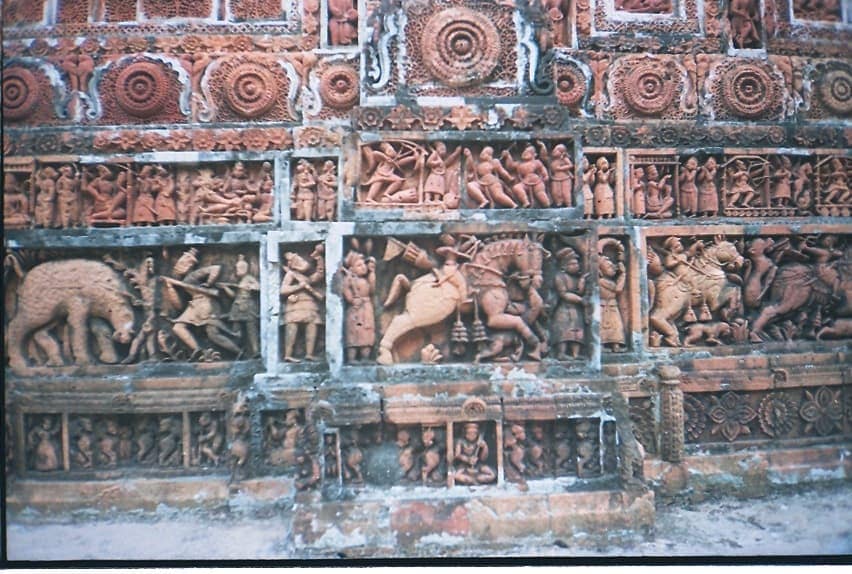Exploring the Timeless Beauty of Terracotta: A Comprehensive Guide
Key Takeaways
- Terracotta, or ‘baked earth’, is a non-vitreous pottery made from clay.
- It’s used in art, architecture, and everyday objects like casserole dishes and tiles.
- Firing temperatures for terracotta typically range around 1,000 °C.
- Its color varies from yellow to brown, depending on the iron content in the clay.
- In art history, terracotta was prominent in various ancient civilizations, including Greek, Roman, and Indian cultures.
- Architecturally, terracotta tiles have been utilized for centuries in roofing and flooring.
- Terracotta’s adaptability allows for both sculptural and practical applications.
The Rich Heritage of Terracotta in Art and Architecture
A Versatile Medium in Art
Terracotta, the humble yet versatile medium, has been a cornerstone in artistic expression across various cultures. From the enigmatic Terracotta Army of China to the elegant Greek Tanagra figurines, terracotta’s adaptability has made it a favorite among artists for centuries. In European medieval art, terracotta sculptures began to gain prominence in the late 14th century, with the Renaissance seeing a resurgence in its use, inspired by classical and Germanic precedents.
Architectural Marvels
In architecture, terracotta has been a favored material for its durability and aesthetic appeal. Its use ranges from intricate roof decorations in Chinese Imperial architecture to the ornate facades of Victorian buildings in England. The 19th century marked a significant era where architects rediscovered terracotta’s potential, leading to its extensive use in building decorations and sculptures.
Production Techniques: The Art of Crafting Terracotta
The crafting of terracotta involves shaping the clay using techniques like additive and subtractive methods, throwing, and slip casting. Post shaping, the clay is dried and fired, with firing temperatures playing a crucial role in achieving the characteristic reddish hue of terracotta. This color varies widely, influenced by the clay’s iron content and the firing temperature.
Unique Properties and Applications
Terracotta’s porous nature makes it suitable for various applications, from water pipes to architectural embellishments. Glazing can enhance its water resistance, making it more versatile. In art, terracotta is often preferred for its ease of handling and the ability to capture fine details, a quality hard to achieve with stone or metal.
The Global Legacy of Terracotta
Indian Terracotta: A Rich Tradition
In India, terracotta art dates back to the Harappan civilization, evolving over centuries to include various styles and techniques. Regions like West Bengal and Bihar are renowned for their terracotta sculptures, with the craft still thriving in modern times.
Terracotta in Western Art
European art saw a revival in terracotta usage during the Renaissance, with artists like Luca della Robbia pioneering its use in sculptures and architectural decorations. The 18th century saw terracotta becoming fashionable for small sculptures and portrait busts, offering a more spontaneous and flexible medium for artists.
Terracotta in Modern Times: Preserving the Legacy
Despite the advent of new materials, terracotta remains relevant in contemporary art and architecture. Its natural charm and versatility continue to inspire artists and architects alike. Museums around the world, including the National Museum in Delhi and the Louvre in Paris, showcase terracotta’s timeless beauty, narrating stories from various epochs and civilizations.
Frequently Asked Questions
- What is Terracotta?
Terracotta is a type of earthenware made from clay, known for its reddish-brown color. It’s used in pottery, sculptures, and architectural decorations. - How is Terracotta Made?
Terracotta is shaped from clay and fired at high temperatures, which gives it its distinctive color and strength. - Where is Terracotta Commonly Used?
Terracotta is used globally in art, architecture, and everyday objects like pots, tiles, and sculptures. - Can Terracotta be Glazed?
Yes, glazing terracotta enhances its water resistance and aesthetic appeal. - What is the Significance of Terracotta in Art History?
Terracotta has been a significant medium in various ancient cultures, including Greek, Roman, and Indian, for its ease of molding and detailed expression. - Are Terracotta and Earthenware the Same?
While both are made from clay, terracotta refers specifically to a type of earthenware known for its red-brown color. - Is Terracotta Durable?
Yes, when fired at the right temperature, terracotta is quite durable and suitable for both indoor and outdoor use. - How Does the Color of Terracotta Vary?
The





